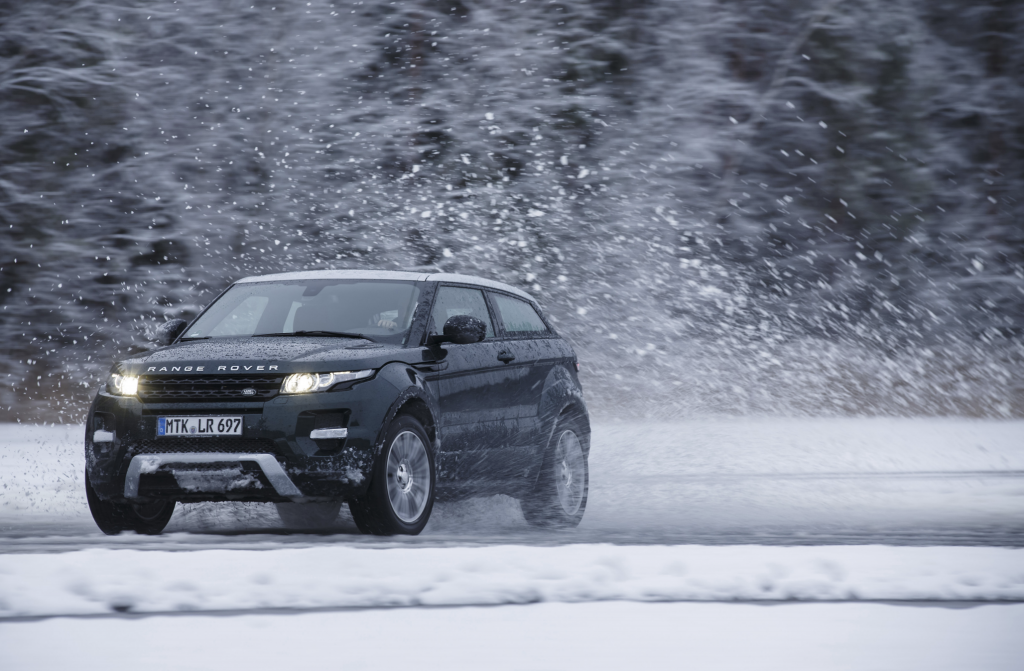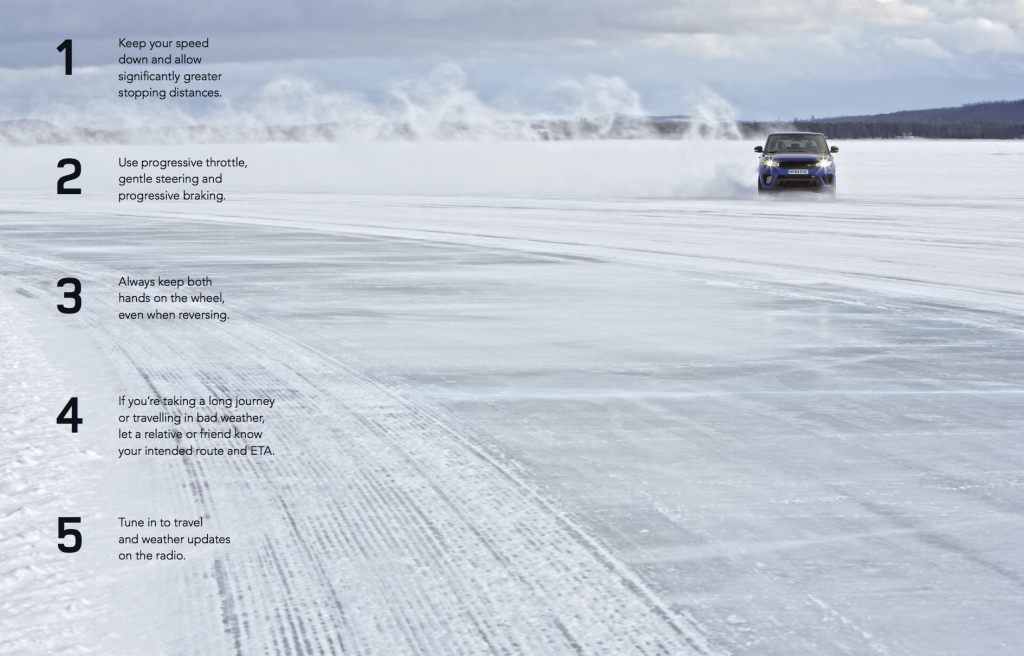An icy road or unexpected snowfall shouldn’t mean slipping, skidding and stalling. The challenges of winter driving can be distilled into two key elements: reduced traction and reduced visibility. This guide is full of simple, practical advice on preparing your vehicle and adapting your road skills to account for these changes. With good preparation, and basic knowledge of how the cold affects conditions, you can travel safely and confidently in any weather.

Preparation
Get a pre-winter check booked in, if you can. Then, when the winter months arrive, keep a windscreen cover on the car overnight. Whenever possible, keep your car in a garage. Before travelling, make sure all lights are working properly and windscreen wiper blades are in good condition. Check the oil, coolant and washer fluid levels. Use good quality screenwash which protects down to -20°C. In case the wipers are frozen to the screen, turn off automatic wiper control before starting the car. Check the forecast before setting off. Frosty weather significantly affects terrain and road safety. Remember to budget extra time for every drive.
Winter Driving Checklist
When driving in wintery conditions, on or off road, it’s a good idea to carry the following:
– Heavy-duty jump leads
– Tow rope
– Torch, with spare batteries
– Light bulb kit and fuse range
– De-icer and windscreen scraper
– Shovel
– Waterproof boots or wellies
– Sunglasses (help reduce glare from low sun)
– Warm clothes and a blanket
– High energy food and drink
– Traction aids
– Snow chains (for very icy roads or deep snow)

Traction and Braking
When driving in ice or snow, use steady momentum to carry you through. If the wheels start to spin or slide, ease off the accelerator until you feel the tyres regain grip. It’s important to keep the wheels rolling. Harsh braking may cause you to skid; so start gently, then progressively increase pedal pressure. On corners, brake before you approach, steer through the corner at a safe speed, then accelerate once you’ve straightened up. Don’t steer while braking or accelerating, and vice versa.
Visibility
Before you set out, use a windscreen scraper or de-icer to remove ice from windows, exterior rear-view mirrors, headlights and brake lights. Don’t use warm water: it may cause surfaces to crack. Avoid putting the heater in re-circulation mode, as it increases interior humidity. In poor visibility, night or day, headlights should be on the dipped/low-beam setting. If you have automatic headlights, make sure to check your lights are on as bad weather may affect the sensors.
Tyres
You should have at least 3mm of tread for winter driving, and definitely no less than 2mm. Tyres in poor condition will not grip icy and snowy roads. Make sure your tyres are properly inflated. Over-inflation can reduce grip, because the tread doesn’t meet the road surface as it should. Under-inflation can reduce stability. Recommended tyre pressure differs according to vehicle load and road conditions, so it’s best to check your handbook. If you live or frequently travel in isolated areas, or places susceptible to heavy snow, you may want to consider fitting winter tyres.